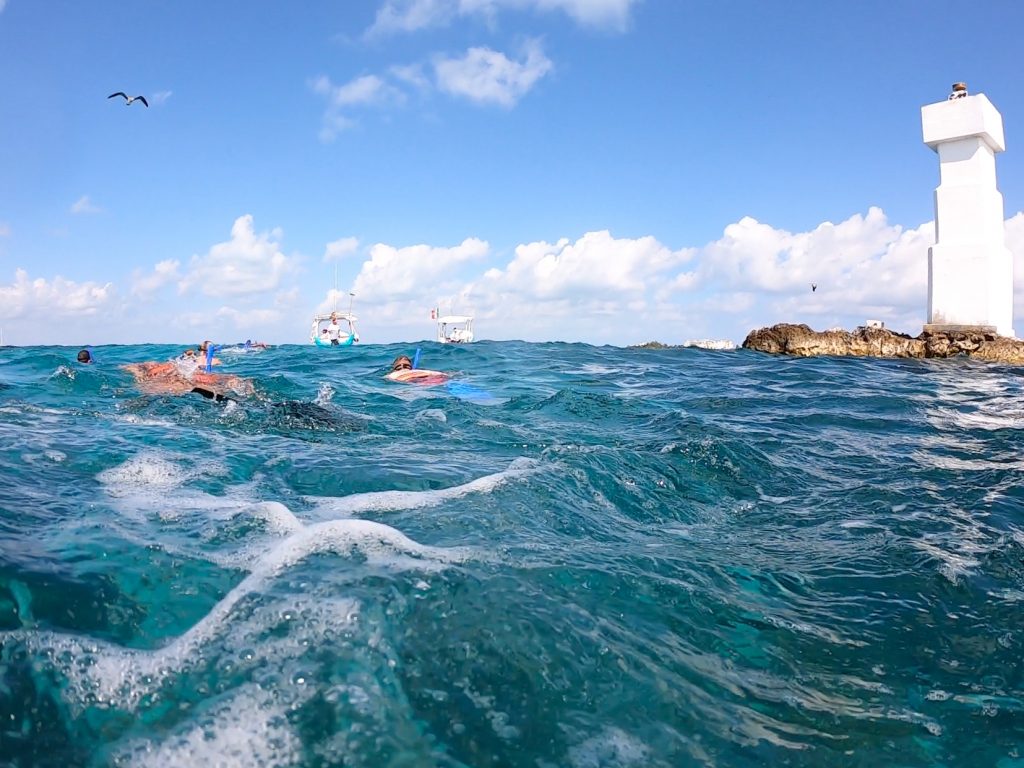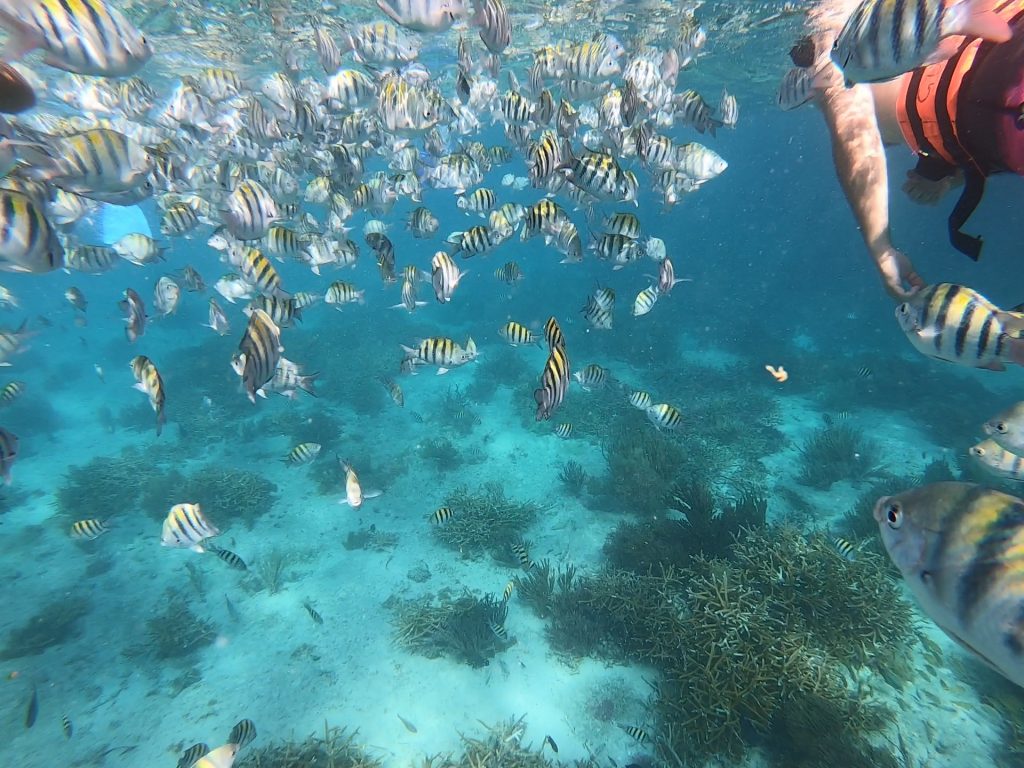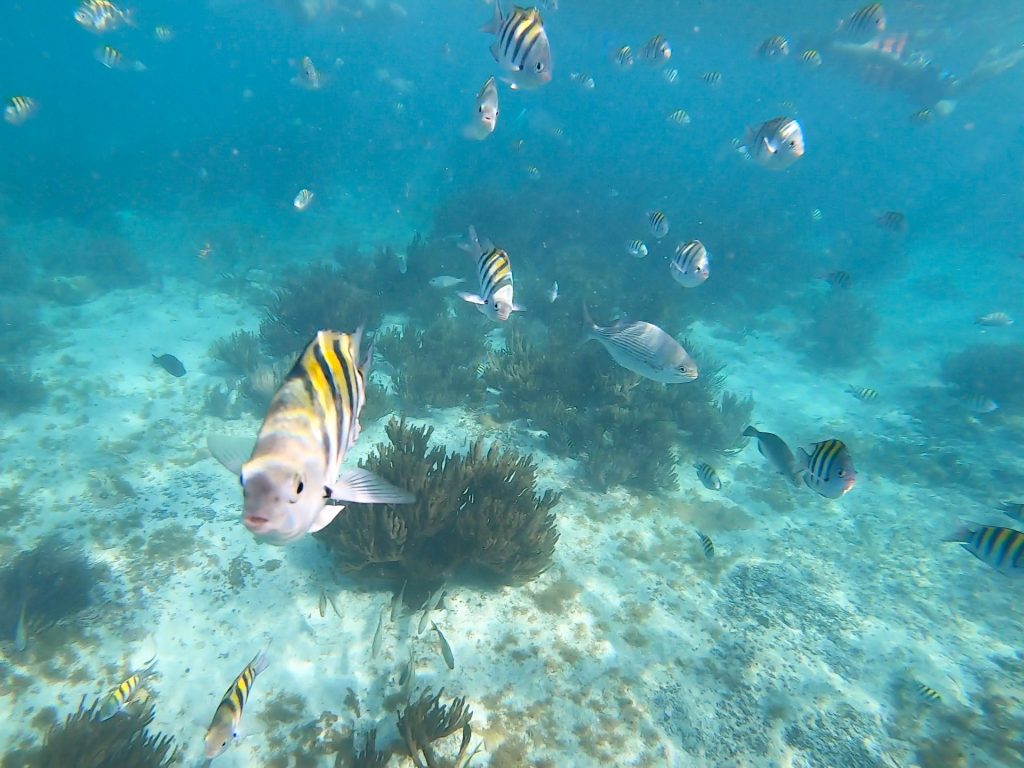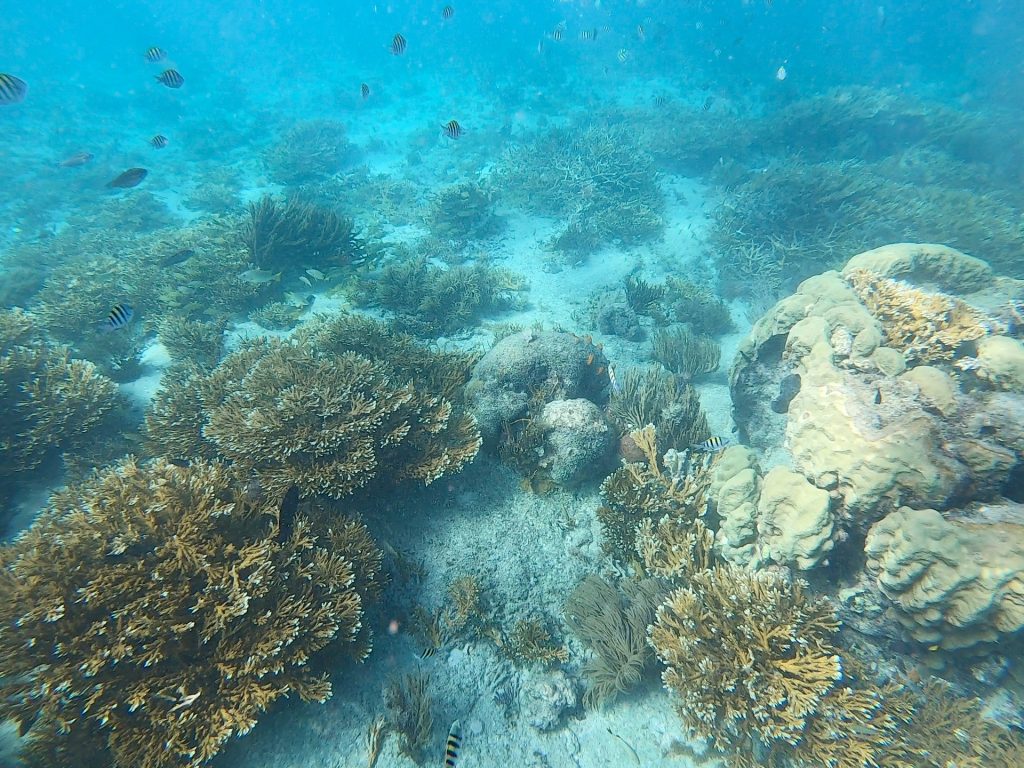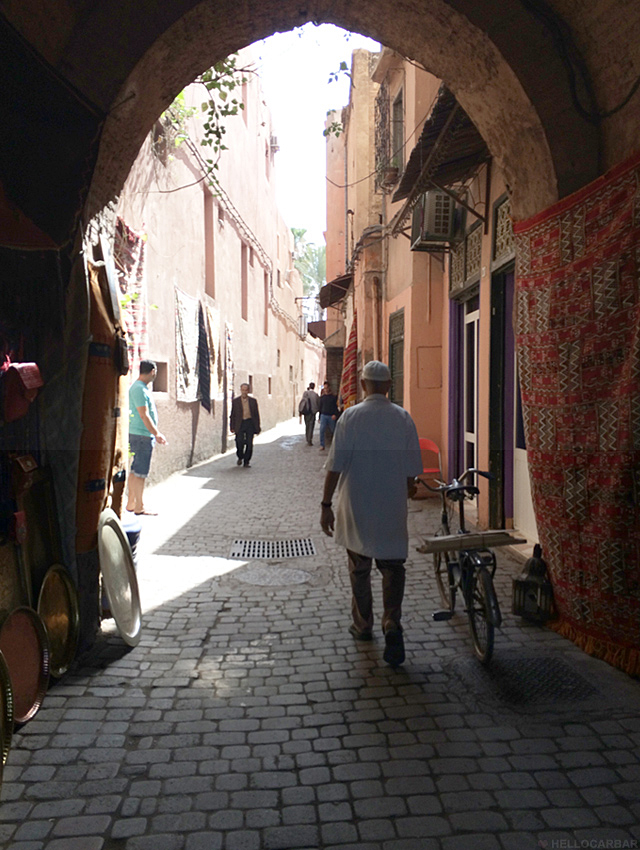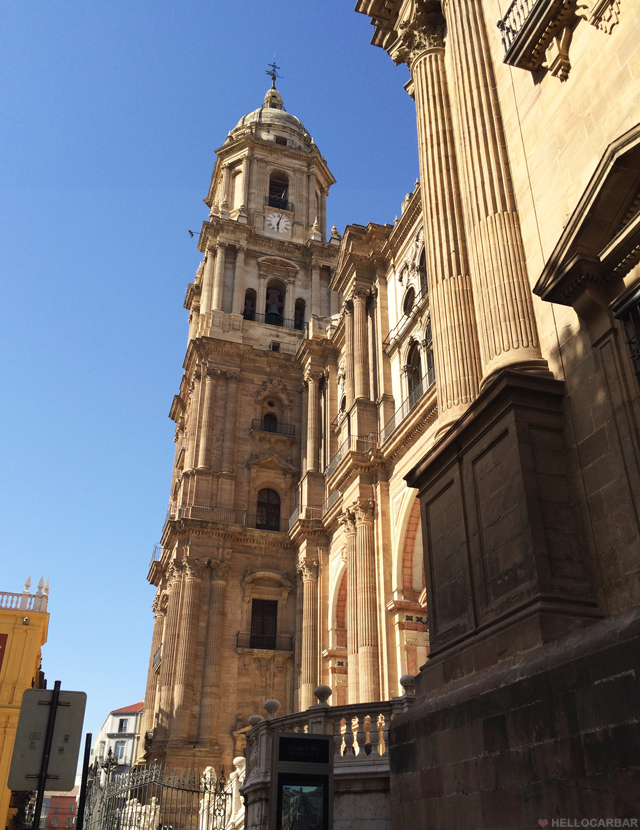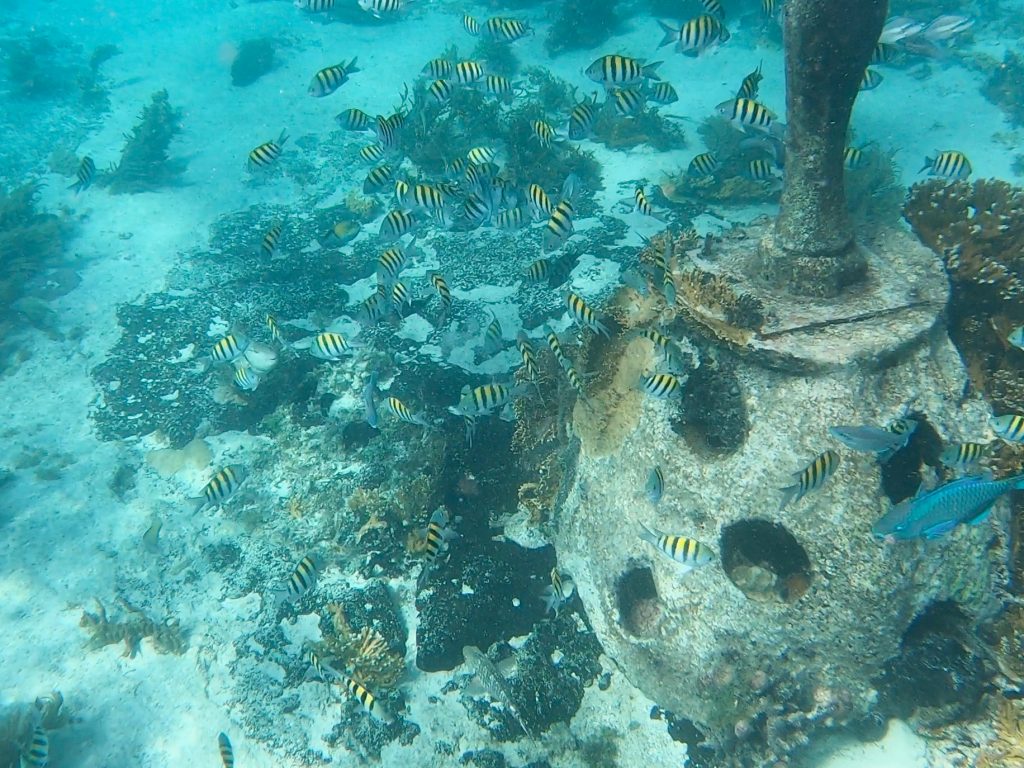
During a short stay in Isla Mujeres, a tiny island off the Caribbean coast of Mexico’s Yucatán Peninsula, Justin and I decided to do a snorkeling tour. Namely because snorkeling (and diving too, but I have yet to take any courses) is one of the more popular things to do on this little island. Well, it’s one of the few things you can do on the island period. That aren’t eating, drinking, or chilling on the beach, of course.
Anyway, after much searching — and by “searching” I mean walking down the main strip and being accosted by people selling snorkeling tours — we ended up finding one that promised to take a small group around two different reefs off of the east side of the island, to an underwater museum, and to another beach for lunch and downtime. Actually, we found many that were selling the exact same thing. Were they all in cahoots? It was hard to say. We settled on one that didn’t leave too early the next morning, though in hindsight we should have asked more questions about what we should expect of our tour. Read on to see why.
It started like any other tour
The next morning we made our way to the pier where a massive group of other tourists were standing around waiting. Presumably for the many other exact same snorkeling tours as the one we booked. Names were yelled and the large group became several smallish ones as people were either sent to benches to wait some more or to board tiny boats. Thankfully we didn’t have to wait for long, our guide was ready and got us into life vests, gave a quick overview of what kinds of fish we might see on the tour (“tropical fish, maybe stingrays, or a shark!”), and then we were off.
It wasn’t long before we reached our first stop, a reef near a lighthouse off the coast. We got a five minute warning to put on our snorkel gear and then it was time to dive in. Or flop unceremoniously from the side of the boat if you’re anything like me when wearing fins. The important thing is, we were in the water! Time to swim with some fish.
Actually, it was time to swim with a lot of fish
Certainly more than we expected. I figured we would see a few here and there hiding amongst the coral, but after being in the water less than five minutes we could already spot a large school of fish that was swimming straight towards us.
After being momentarily freaked out by all the activity and worrying that I might accidentally touch the fish (or worse, they might touch me… ewww) I noticed Justin gesturing in my direction. He pointed at our guide. Who was baiting the fish. That was why we were being swarmed. I wasn’t reliving a scene straight out of a marine life documentary, but the result of some conveniently placed fish food. So that was a bit of a bummer.
The baiting business went on at the next reef we stopped at as well. I’m no snorkeling pro — before this tour I can count the number of times on one hand where I’d rented gear and paddled around smaller non-endangered reefs without a guide — but I always thought that snorkeling etiquette dictates that you don’t stand on the coral or otherwise touch or feed the wildlife. (Also to “have fun”, and also maybe “don’t drown”). At a any rate, though we did see quite a lot of fish, I couldn’t get that excited about it because the whole experience felt very manufactured.
There was a bright side though
The Underwater Museum (Museo Subacuático de Arte, otherwise known as MUSA) however was really neat. A man by the name of Jaime Gonzalez Canto took it upon himself to submerge 500 sculptures underwater in an effort to protect the nearby coral reefs off of Isla Mujeres. Many are statues of people going about their everyday lives, but there’s also a house, different types of bombs (like minesweeper!), and even a car. The sculptures were created to incorporate coral and algae growing on them in the hopes that over the years a new reef will thrive in the area. It’s also an alternative place for people to dive and snorkel without further damaging the existing reefs. From what I’ve been told, MUSA is a work in progress and for the foreseeable future they will continue to add to it.
And bonus, no one was throwing bait in the water — possibly because the museum is inside a protected marine park and there are people patrolling the waters to make sure nothing (ahem) fishy is going on. So here we saw far fewer fish, but that was fine by me. There was all the “art” to admire, though from afar. I bet it’s amazing to see up close if you were diving rather than snorkeling. Yet another reason to get my PADI license sometime in the near future.
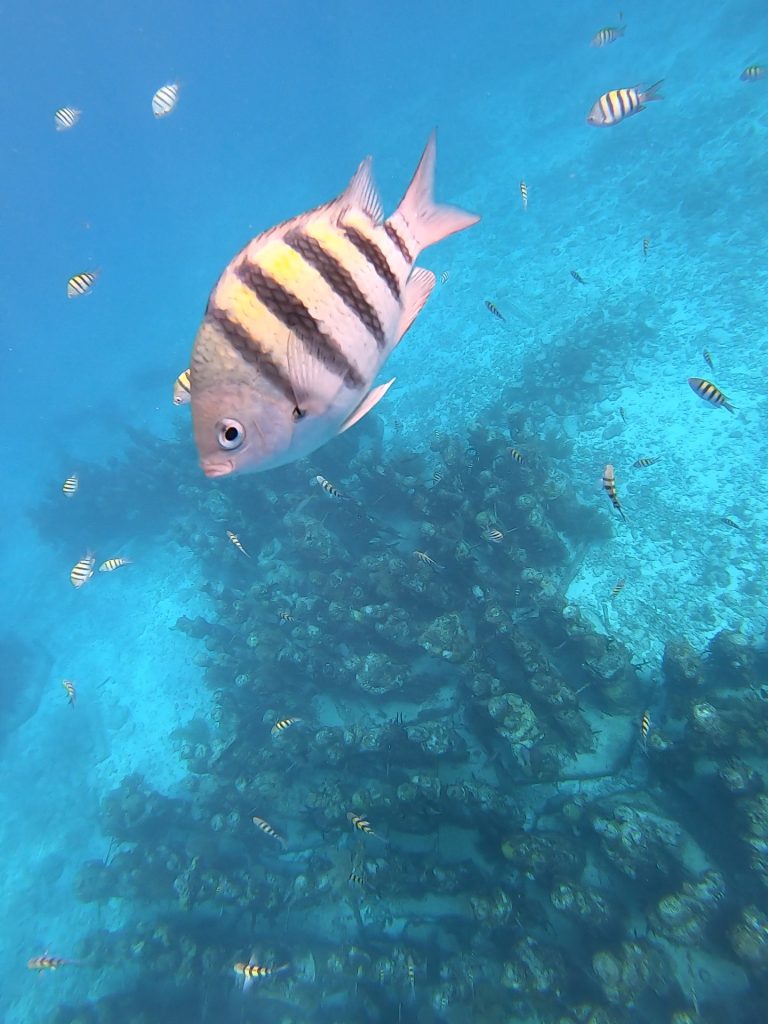
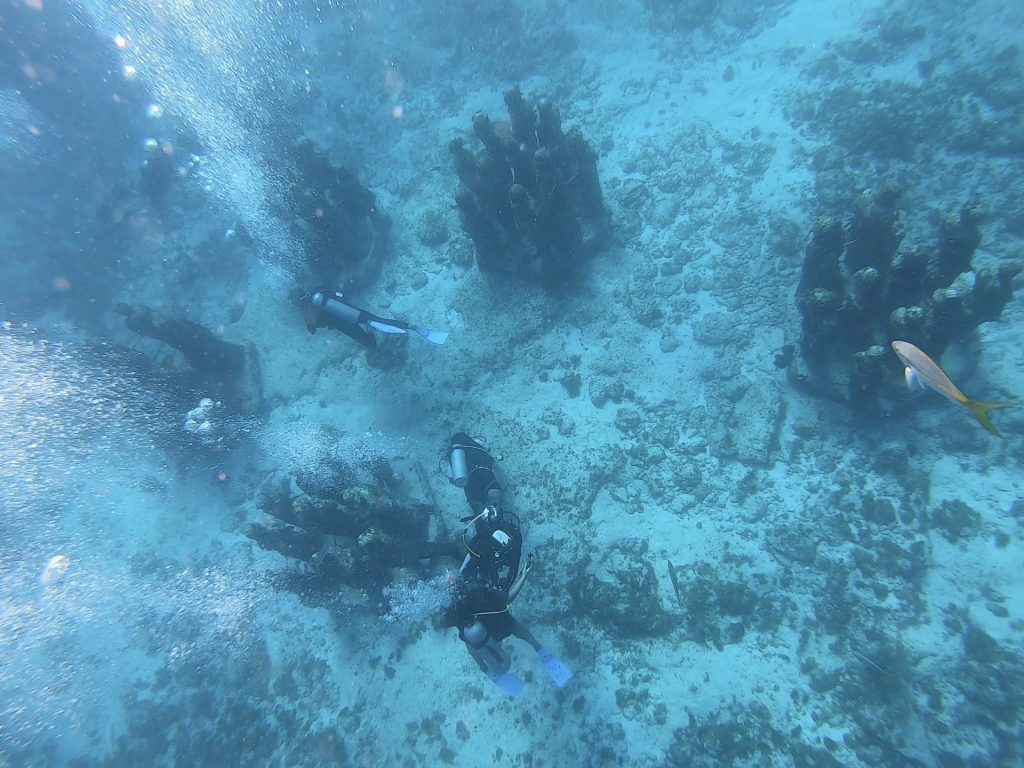
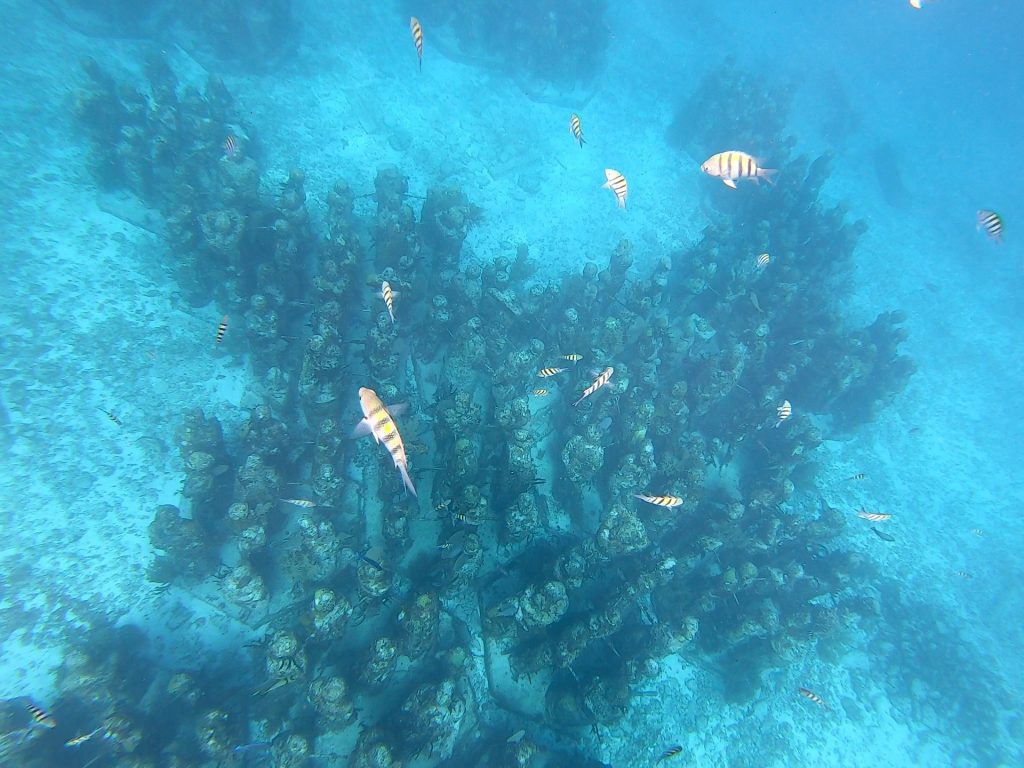
This may look like coral at first glance, but it’s actually about 100 statues part of a MUSA exhibit
The rest of the tour was uneventful, mostly because we stopped to have lunch and beach time at Playa Tiburón, aka Shark Beach, which is located around the centre of Isla Mujeres. There were no sharks there, just in case you were wondering, only mediocre food. The beach was quiet and relaxing though.
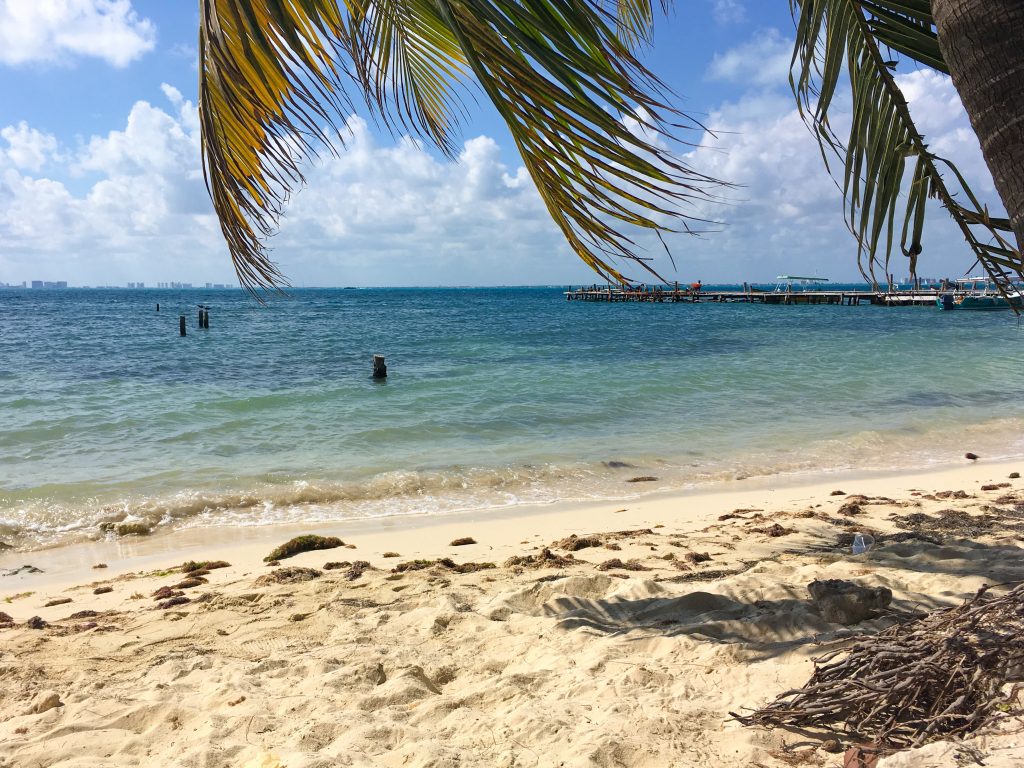
Lessons learned
The first mistake we made was to assume a local business would value the well-being of the wildlife in their area more than setting up photo ops for profit. Because everyone needs money, I guess? The second mistake was not speaking up when we saw something we didn’t think was right. Of course, part of it was because we were all in the water with masks and tubes in our faces, the other part being that no one else said anything or seemed to mind either.
It’s certainly a fine line. Maybe our guide thought he was doing a good thing by giving the fish easy access to food and making tourists happy at the same time. Or maybe he didn’t, and fed the fish knowing that happy travelers meant he would get better reviews. Maybe there were others like us who wanted to say something but also felt a bit uncomfortable about doing so. And maybe no one really cared. I’ll never know, but at least I now know to ask the right questions before going on another snorkeling tour like this one.
Since this tour I’ve gone on a few more organised snorkeling trips and found them to be a thousand times better, both in the transparency of how the company operates (not touching the animals/fish, encouraging the use of reef-safe sunscreen, etc) and in making genuine, enjoyable experiences for travelers like me without compromising the well-being of living things. Here’s hoping that continues!
– C

